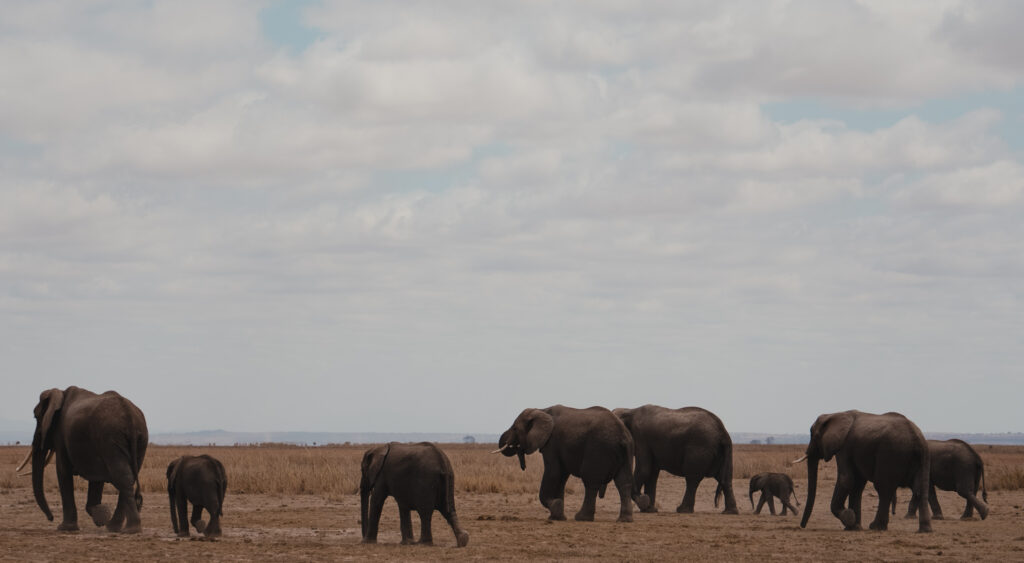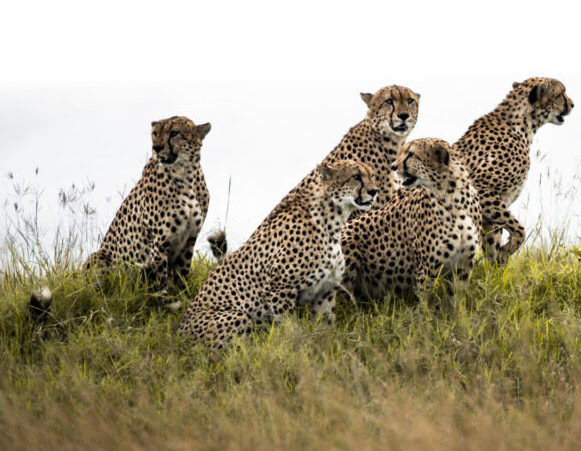The raccoons on UC San Diego’s campus hold a special place in the hearts of many students. You might have seen them running around Seventh College, climbing trees, or fishing something out of the trash cans. Sometimes they are alone; other times they are with another raccoon or even many other raccoons. They are not the only animals found on campus. Ravens can be seen flocking in pairs near the dining halls scavenging for food and making their loud calls. And one or two rabbits can always be found feeding on the grass outside the WongAvery Library.
Why do we see these animals in multiple numbers? The answer: their survival. In the case of the animals at UC San Diego, associating themselves with one or two individuals is best to find food and fend against danger. But what about larger groups? What is advantageous about living in mass herds? You may think that it would actually lower chances of survival since resources, such as food, have to be shared amongst everyone, and a group presence can be better detected by predators. To get around these costs, complex social relationships allow for survival.
Matriarchies
One form of social organization is matriarchy, which is when a dominant female leads a group. The most well known species that follow this organization are African and Asian elephants. The matriarch, or the leader, is the oldest and most experienced female who typically guides her herd to food and water, while also making judgment calls about when to run away from predators. Elephant herds mainly consist of adult females who are all related and help each other raise elephant calves. By doing this, female elephants gain experience (up to 16 years) of being a mother before they actually have to raise a child. You can probably relate to these elephants if you’ve ever had to take care of younger siblings. As someone who learned how to change a diaper at 5 years old, I’d rather wait until I’ve had my own kid.
If females lead matriarchies, what about the male elephants? Male elephants are generally found alone. Because they are much larger and stronger than the female elephants, they can fend off predators such as lions and hyenas by themselves. When male elephants reach maturity (12 to 14 years), they are slowly phased out of their mother’s herd. Young bulls will often form small herds amongst themselves or follow an older male elephant

to guide them until they can handle life on their own. An ecological advantage to this is that it increases genetic diversity since elephants travel large ranges, up to 1000 square kilometers over the course of their lifetime. Mating usually occurs when a male finds a herd and is accepted by a female of that group. Females usually aren’t interested at first and will run away, so the male chases her around until she finally decides to mate. It seems that there is more to courting than just good looks for the elephant species.
Another species that follows a matriarchal organization are spotted hyenas. Like elephants, there is a dominant female who is a leader of other individuals. Unlike elephants, each female is ranked relative to other females. The matriarch is the highest ranking female with her daughters next in line, kinda like the British monarchy, but without the men. As expected, mother hyenas outrank their daughters. Unexpectedly, younger daughters outrank their older sisters! According to this study, in conflicts between sisters, the mother will support the younger of the two, implying that the younger is higher ranking. Oldest child inheritance rules do not apply in the hyena world. While the exact reasoning for this is unknown, it could possibly be due to mate selection. Higher ranking females get to choose more competitive males, which ensures good genes get passed onto offspring.
Where do male hyenas stand in this ranking system? At the very bottom. Once males reach sexual maturity, they leave their home clan as females won’t mate with males from their own clan. In the new clan the males ranking is so low, I wonder if it is even worth it for these young male hyenas. Turns out, it is. A study conducted by the Michigan State University found that high ranking females prefer lower ranking males when it comes to mating. Males born into the clan are higher ranking, so in turn they get more resources, but immigrant males tend to receive mating priority, likely to avoid inbreeding.
Harems
Just like matriarchies, patriarchies exist too (in a way). Groups dominated by males are well known, like packs of wolves. However, harems are somewhat different from wolf packs in that they consist of one male who is responsible for many females and their young. Males form their own harems by fighting with each other to win females, even going so far as to “steal” a female from another harem. They will mate with their collected females and protect them by leading the group to resources and keeping them clear from predators. When traveling, the oldest female will take the lead and the male will follow behind, watching his group. Similar to other social structures, males will get kicked out of the group by their fathers once they reach sexual maturity. Young males will congregate with other young males until they form their own harem.
Animals that form harems tend to be considered prey. Plains zebras and antelopes separate themselves in these groups, but often stay in close proximity to other harems. This is to create a large group that will be well warned if a predator emerges.

Bachelor Herds
Have you noticed that males leaving the groups they were born in once reaching sexual maturity is a common theme across species? And because they are young and on their own for the first time, they tend to form groups with other males until they have found a mating partner. These groups are called bachelor herds. Sizes of these herds can vary, elephants

will form groups of two or three, whereas impalas, a type of antelope, can form in groups up to 20, and college fraternities can form up to 100 frat boys! Bachelor herds essentially provide young males the opportunity to learn how to be a successful and surviving adult so that they can find a good mate. It is pretty common to find herds made up of brothers and cousins as they typically come from the same place. Although this is common among prey animals who protect each other from predators, predators themselves will also form bachelor groupsLions and cheetahs form small hunting groups with their brothers so that they can hunt other bachelor groups. A similar scene can be found on Library Walk during fall rush.
The way in which different animals group themselves over the course of their lifetime sheds light on why that species has been successful in its habitat. Elephants, hyenas, and zebras evolved into their respective species because they formed these groups.
Sources:
https://onlinelibrary.wiley.com/doi/10.1111/j.1365-294X.2011.05240.x